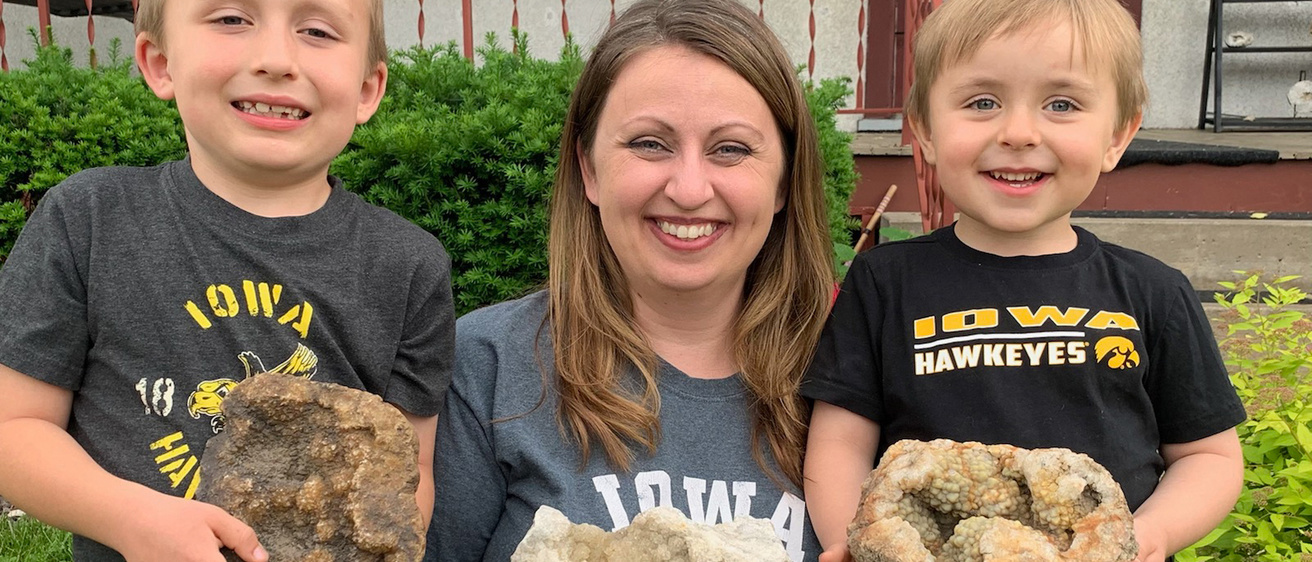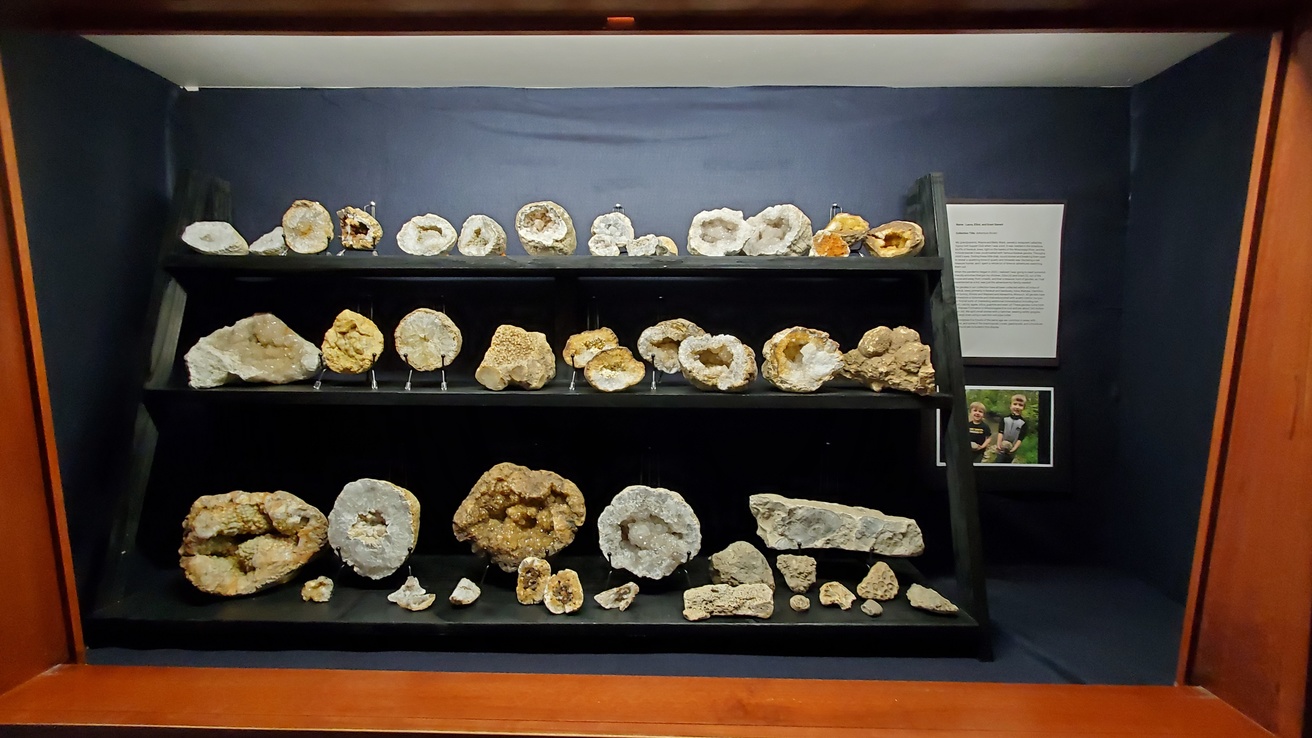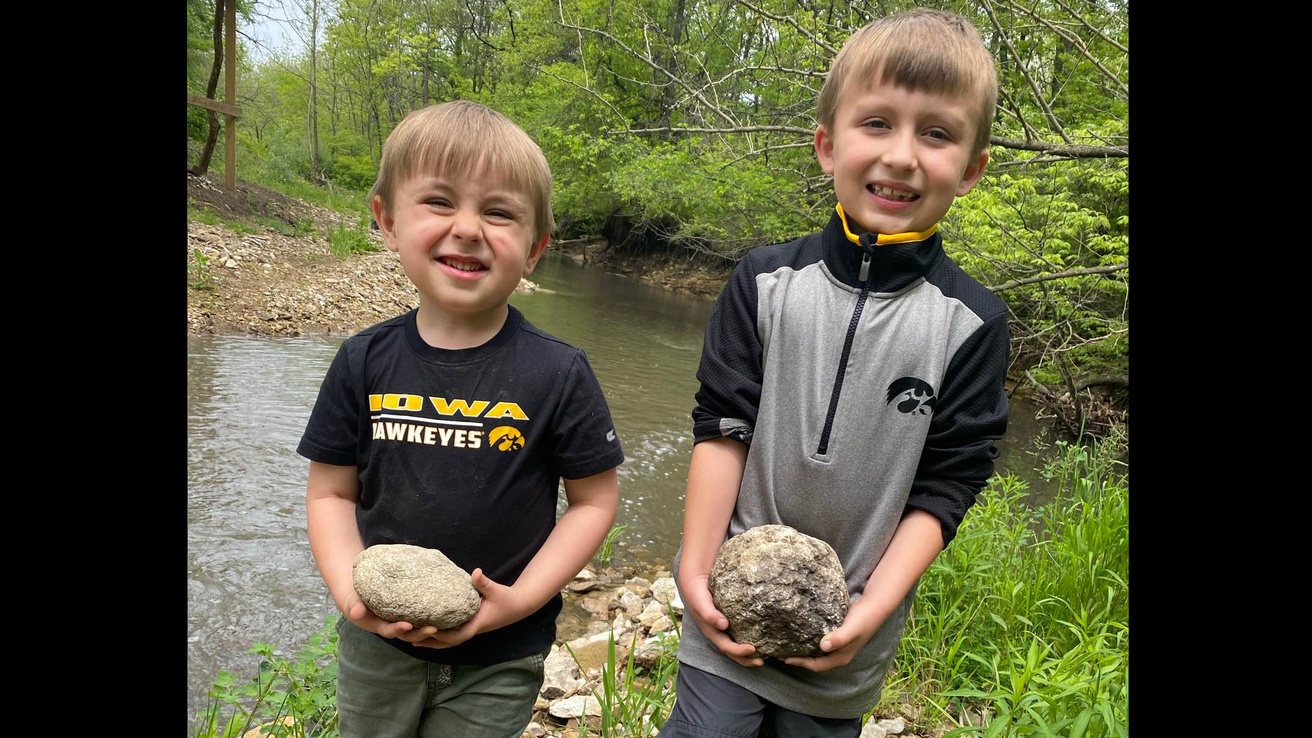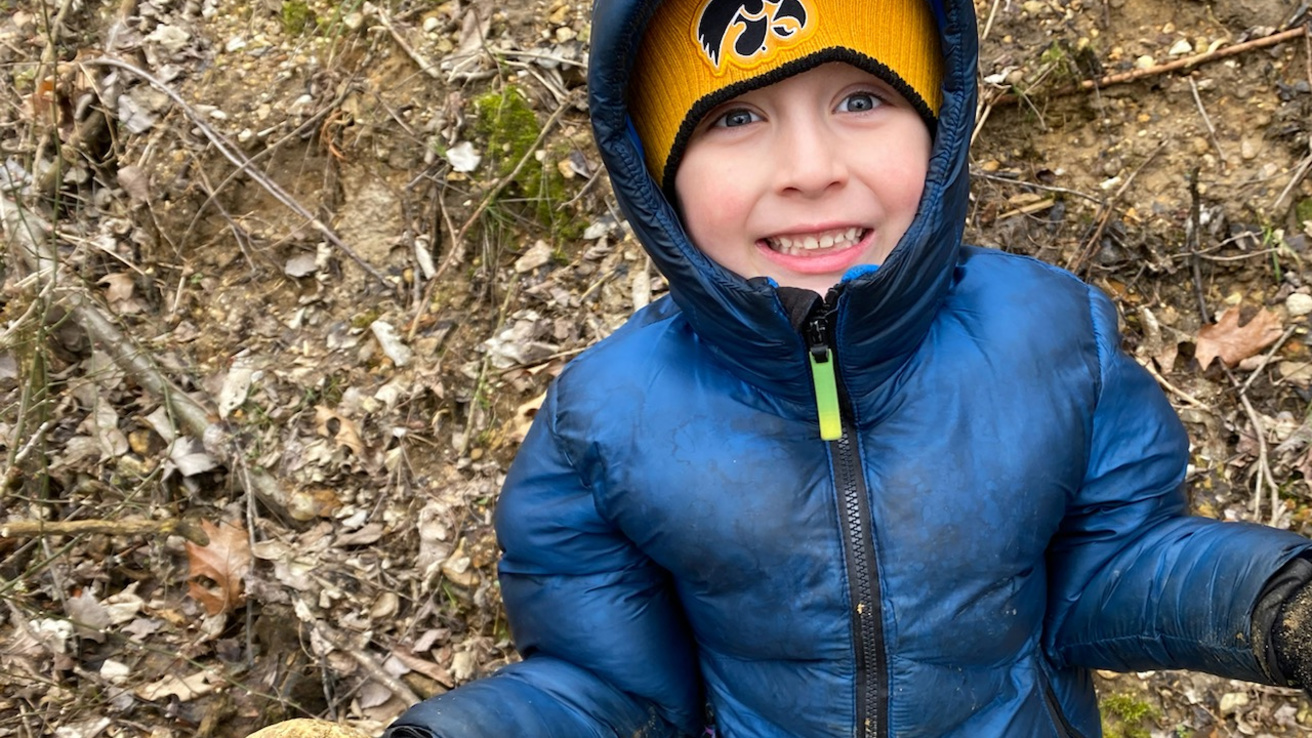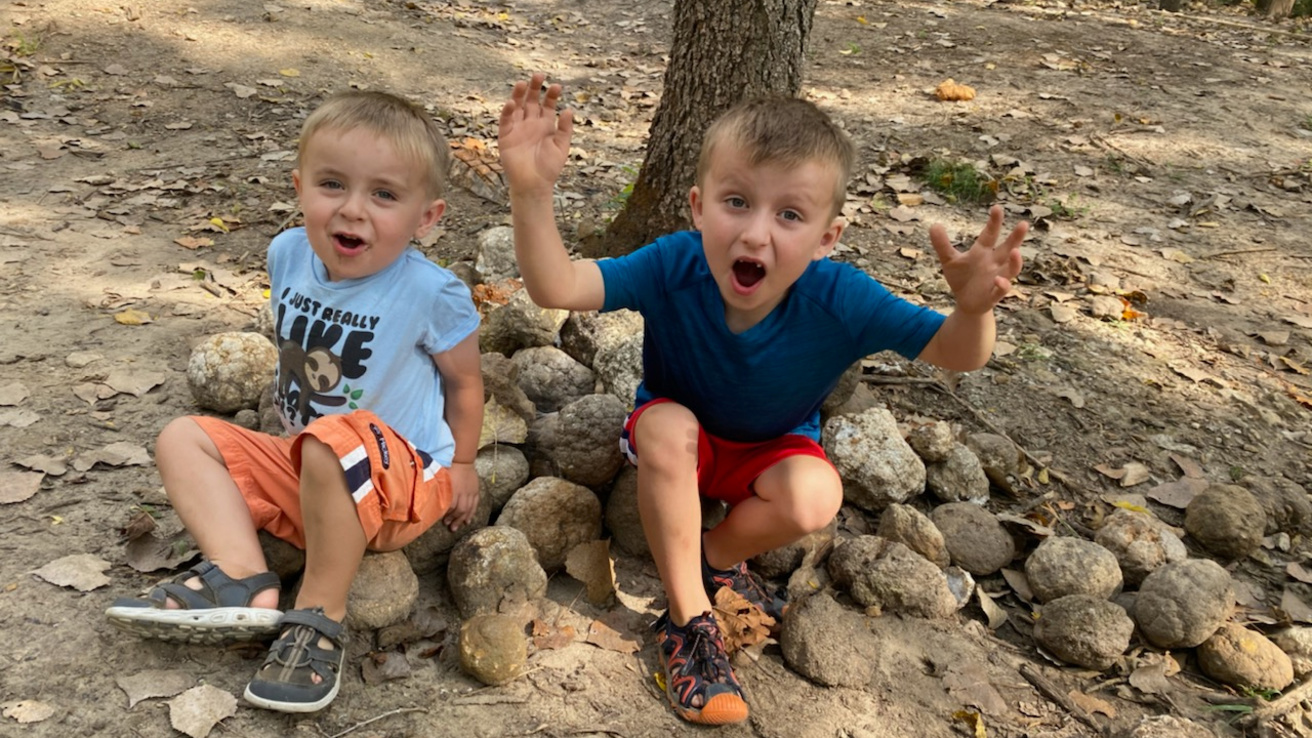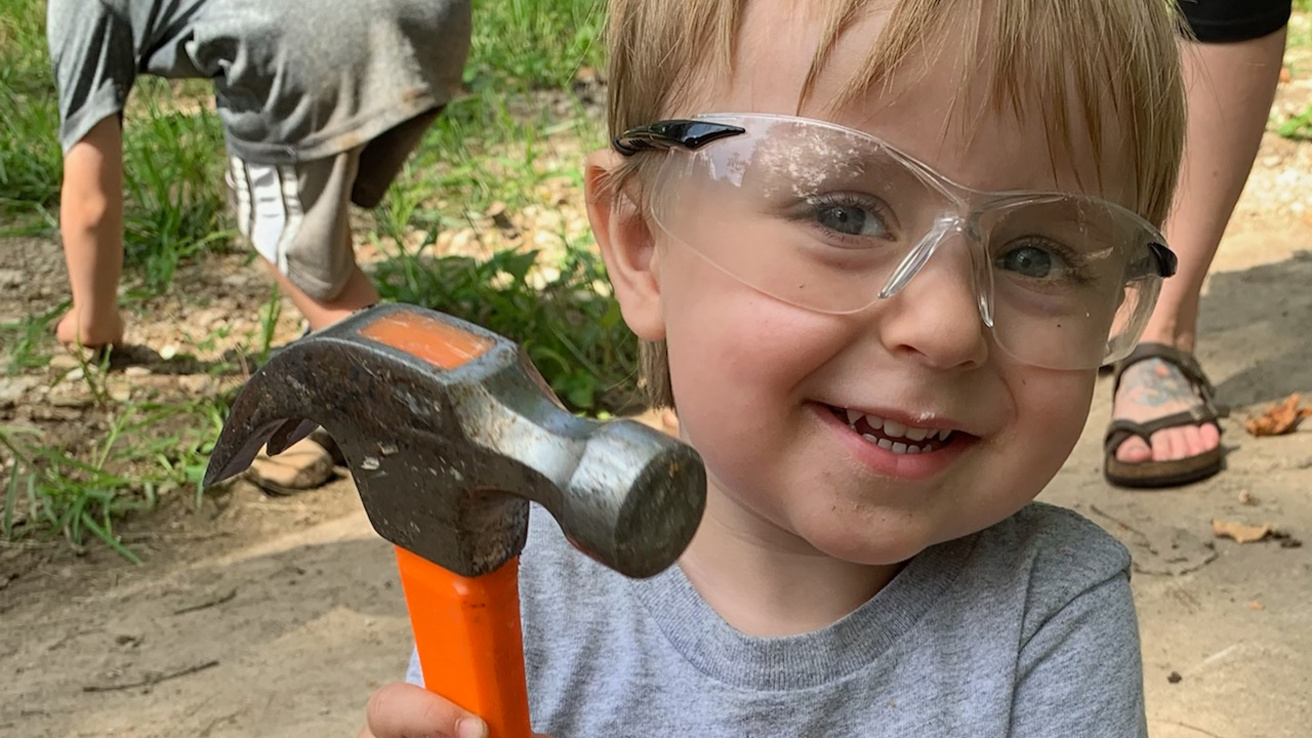Collectors: Laura, Elliot, and Grant Sievert
Collection Name: Adventure Rocks!
Collection Statement:
"My grandparents, Wayne and Betty Ward, owned a restaurant called the Gypsy Dell Supper Club when I was a kid. It was nestled in the limestone bluffs of Keokuk, Iowa, right on the banks of the Mississippi River, and the hillside beside it was pockmarked with famous Keokuk geodes. Through a child’s eyes, finding these little drab, round stones and breaking them open to reveal a sparkling trove of quartz and minerals was like being a real treasure hunter, and I spent a whole lot of time on adventures searching them out.
When the pandemic began in 2020, I realized I was going to need some kid-friendly activities that got my children, Elliot (6) and Grant (3), out of the house and away from crowds, and that a treasure hunt of geodes, as I had experienced as a kid, was just the adventure my family needed!
The geodes in our collection have all been collected within 40 miles of Keokuk, Iowa, primarily in Keokuk and Sandusky, Iowa; Warsaw, Hamilton and Quincy, Illinois; and Wayland and Alexandria, Missouri. All geodes have a limestone or dolomite and chalcedony shell with quartz interior, but you can find all sorts of interesting additional mineralization including iron (rust), calcite, agate, silica, graphite and even oil! These geodes come from the Warsaw Formation in Mississippian Era rock and are about 340 million years old. We split small stones with a hammer, wearing safety goggles, and large ones using a cast-iron soil-pipe cutter.
Mississippian Era fossils of the same age are common in areas with geodes, and some of the brachiopods, corals, gastropods, and crinoids we have found are included in this display.
Keokuk Geodes, ~340 M years old, Lower Warsaw Formation, Mississippian Era: Over 17 different minerals have been identified in Keokuk Geodes. All of these come from limestone wall outcroppings along creeks and tributaries in the Iowa/Illinois/Missouri Tristate Area, primarily in creeks that empty to the Mississippi River. The Missouri geodes here come from creeks that empty to the Des Moines River, which makes its way to the Mississippi about 5 miles from the collection site. Chalcedony, a form of silica, forms the outside shells of Keokuk Geodes and inside you almost always have quartz, with or without other minerals. Common minerals include calcite, iron rust, silica, agate, dolomite, magnesium and pyrite. If a geode becomes cracked in a creek, water can deposit many different minerals over top of the quartz crystals just like hard water stains in your sink! Many caves in our area have deposits of these same minerals."
Image Gallery
List of items in collection:
Top shelf:
- Quartz Geode halves, Keokuk, IA
- Quartz Geode halves, Hamilton, IL
- "Brown Sugar" Geode, Sandusky, IA
- Sheeted Rust, Keokuk, IA
- Agate Nodules, Warsaw, IL
- Quartz with Assorted Rust and Pyrite inclusions, Des Moines River Area near Wayland, MO
Middle Shelf:
- Agate Coated Quartz, Adams County, IL
- Dusky Quartz, Keokuk, IA
- Mineralized Geode, Alexandria, MO
- Quartz Geode, Keokuk, IA
- Geode halves with Calcite and Iron, Keokuk, IA
- Quartz Geode, Keokuk, IA
- Uncracked Geodes in Situ (piece of limestone wall)
Bottom Shelf:
- Heavily Mineralized with Agate, Chalcedony (silica), Iron, Hamilton, IL
- Agate and Chalcedony coated Quartz, Keokuk, IA
- Iron and Unknown Minerals in Quartz Crystals, Warsaw, IL
- "Snowball" Quartz with Iron, Sandusky, IA
- Quartz Geode half, Keokuk, IA
- Mississippian Fossils from geode areas: brachiopod shells, crinoid stem pieces and horn coral. The two larger coral hexagonal coral pieces are likely Devonian Era and collected near Coralville, IA.
Want a better look? Guests can view this family's collection on the First Floor of Macbride Hall, south of Iowa Hall, starting the second week in June - mid-September, 2021.
